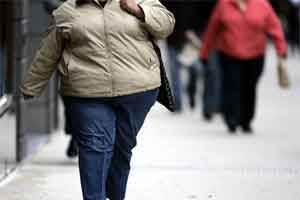Exercise Can Help Control Blood Glucose, and Trim Waist Size and Body Fat in Diabetics Regardless of Fitness Gains
 Diabetics who exercise can trim waist size and body fat, and control blood glucose, even if they don’t see cardiorespiratory benefits, new research by UT Southwestern Medical Center cardiologists shows.
Diabetics who exercise can trim waist size and body fat, and control blood glucose, even if they don’t see cardiorespiratory benefits, new research by UT Southwestern Medical Center cardiologists shows.
Researchers found that waist circumference, percentage of body fat, and hemoglobin A1c levels all improved in diabetic participants who exercised compared to those who did not. And the beneficial effects of exercise were seen whether they participated in aerobics, resistance training, or a combination of the two compared to a control group that did not exercise.
“What we observed is that exercise improves diabetes control regardless of improvement in exercise capacity,” said Dr. Jarett Berry, Associate Professor of Internal Medicine and Clinical Sciences at UT Southwestern, and co-senior author of the study.
Following an exercise training program generally improves fitness. Researchers typically measure fitness by the ability of the respiratory system to exchange carbon dioxide and oxygen. The more you train, the better your ability to take in oxygen.
But a sub-group of exercisers, considered non-responders, are unable to improve their cardiorespiratory fitness levels despite diligent exercise, explained Dr. Ambarish Pandey, a cardiology fellow at UT Southwestern and first author on the study appearing in Diabetes Care. About 30 percent of exercisers are considered non-responders.
Using data from the Health Benefits of Aerobic and Resistance Training in Individuals With Type 2 Diabetes (HART-D) trial, researchers looked at whether non-responders who exercised saw improvements in their diabetes control.
“We were interested in the relationship between the change in cardiorespiratory fitness, or exercise capacity, and change in metabolic parameters,” said Dr. Berry, a preventive cardiologist and Dedman Family Scholar in Clinical Care.
Researchers divided people into four groups:
• Controls, who did not exercise;
• Individuals who did aerobic exercise;
• Individuals who did resistance training;
• Individuals who did a combination of aerobic exercise and resistance training.
The UT Southwestern data analysis found that hemoglobin A1c, waist circumference, and percentage of body fat all improved in the groups that exercised, regardless of whether the participants improved their cardiorespiratory fitness. This outcome was true even for those participants who were fitness non-responders – those whose ability to take in oxygen did not improve.
“This finding suggests that our definition of ‘non-responder’ is too narrow. We need to broaden our understanding of what it means to respond to exercise training,” Dr. Berry said.
The study proposes that exercise-training programs for people with Type 2 diabetes should measure improvements in glycemic control, waist circumference, and percentage of body fat.
Source Newsroom: UT Southwestern Medical Center
Citations
Diabetes Care

